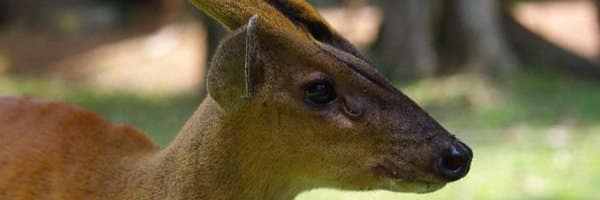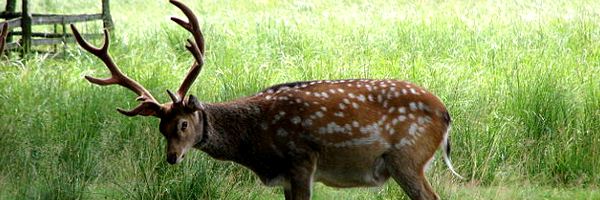Visayan Spotted Deer – Rusa alfredi
The Visayan Spotted Deer is beautiful and it is a small species of deer. They are often the size of family dogs. They average 2 ½ feet tall and weigh from 55 to 180 pounds. It wasn’t identified as its own species until 1983 so it is a fairly new animal to consider learning about.
They have a deep brown coloring on them and an A pattern of cream colored spots on their bodies. They are one of the few species of deer that keep their spots all their lives. With most of them the spots will disappear around the same time that the fawns are being weaned. They have a white coloring under the chin and under the belly.
Visayan Spotted Deer Distribution
They are found in the forest areas where they can easily find food and shelter. They used to be found in mountain terrain but they no long seem to be inhabitating that region. The Visayan Islands is where they are mostly found which explains their unique name. The range for them continues to get smaller though so they are living in closer proximity to each other than ever before.
Visayan Spotted Deer Behavior
There are different reports out there about the behaviors of the Visayan Spotted Deer. Most of them say that they are isolated animals that live alone other than for mating. Other reports though are of a male, a female, and a young offspring together. It could be that they gather at times for food and shelter. That could be what is taking place out there due to their natural habitat getting smaller and smaller.
Visayan Spotted Deer Feeding
They consume a variety of different foods in their natural environment. They include grass and leaves. They will also consume small plants that grow around the area during different types of the year. They often have to compete with other animals for food which can make it difficult to get enough.
Visayan Spotted Deer Reproduction
Mating takes place in November and into December. The males will make very loud roaring sounds in an attempt to attract the attention of females out there. The female will carry the offspring for about 240 days. They are very good caregivers and will feed the young from her body for about six months. After the first year of life the youngster will make its own way out there.
Visayan Spotted Deer Conservation
They are considered to be one of the rarest animals in the world. Conservation efforts have been attempted but not successful. It seems that many in charge around the Visayan Islands are more interested in land development prospects than protecting the future for this deer species. Due to a great deal of pressure though they are now fully protected from hunters under Philippine Law. Yet the enforcement of such laws doesn’t occur often and so the illegal hunting continues to be a huge threat to their survival.
Progress has been made though as they were on the Endangered Species list from 1994 until 2004. Today they are listed as Critical but that is definitely a step in the right direction. Continued efforts have to be in place though if they are going to be able to continue being on Earth for a very long time. Today there are an estimated 2,500 of them remaining in the wild.
Visayan Spotted Deer and Human interaction
The quest to further develop the area around the Visayan Islands has resulted in a large portion of their natural habitat being removed. Logging operations that function throughout the region are also responsible for the destruction of the forest where they live. Heavy hunting of this particular species of deer is also a concern in regards to their future.
(Photo taken by Magalhães)







